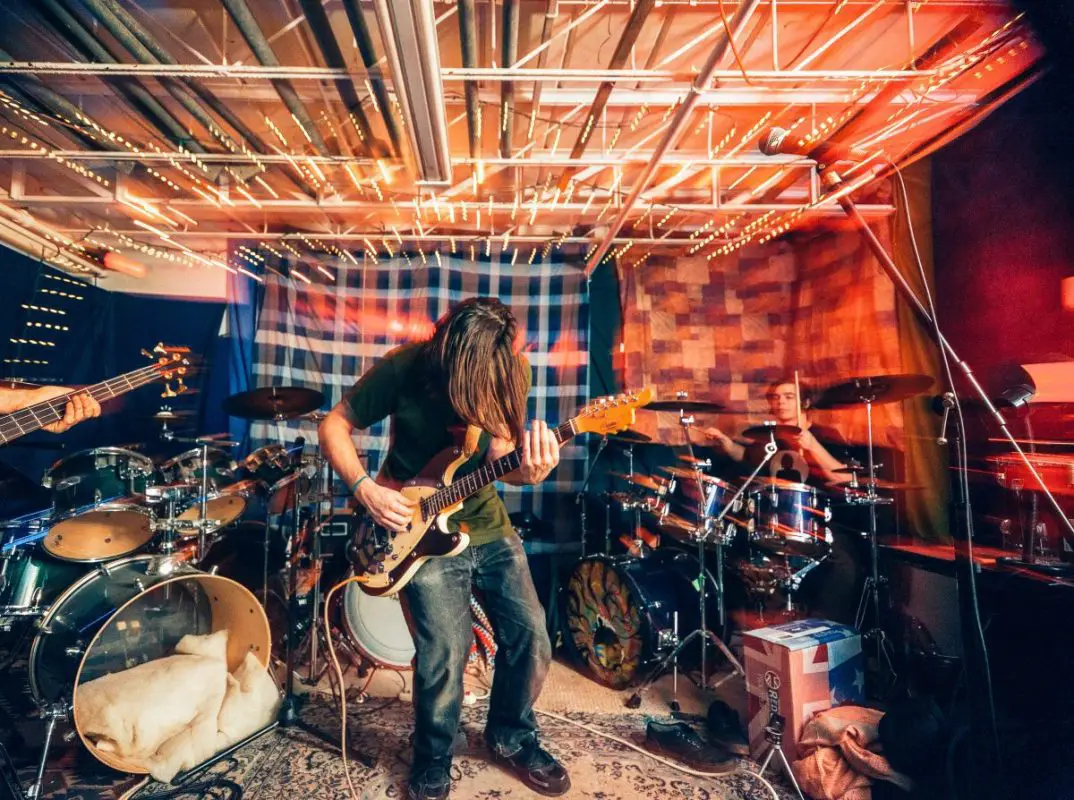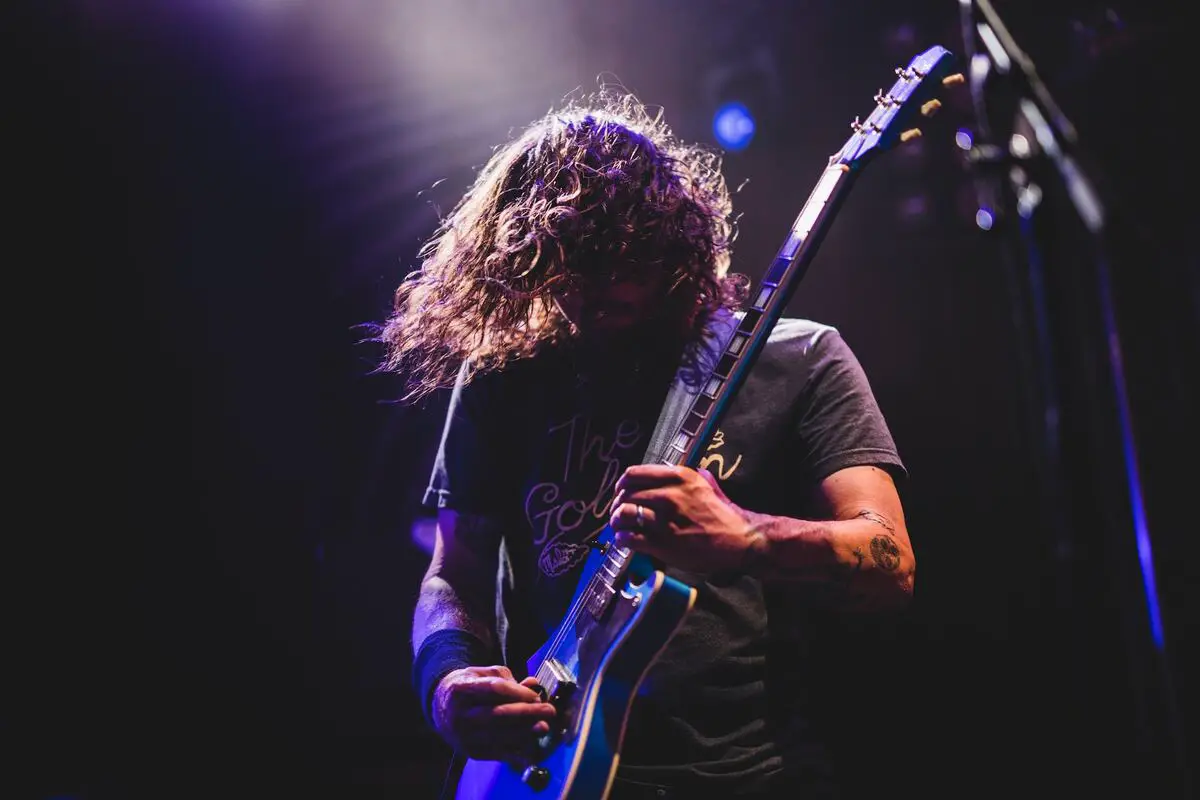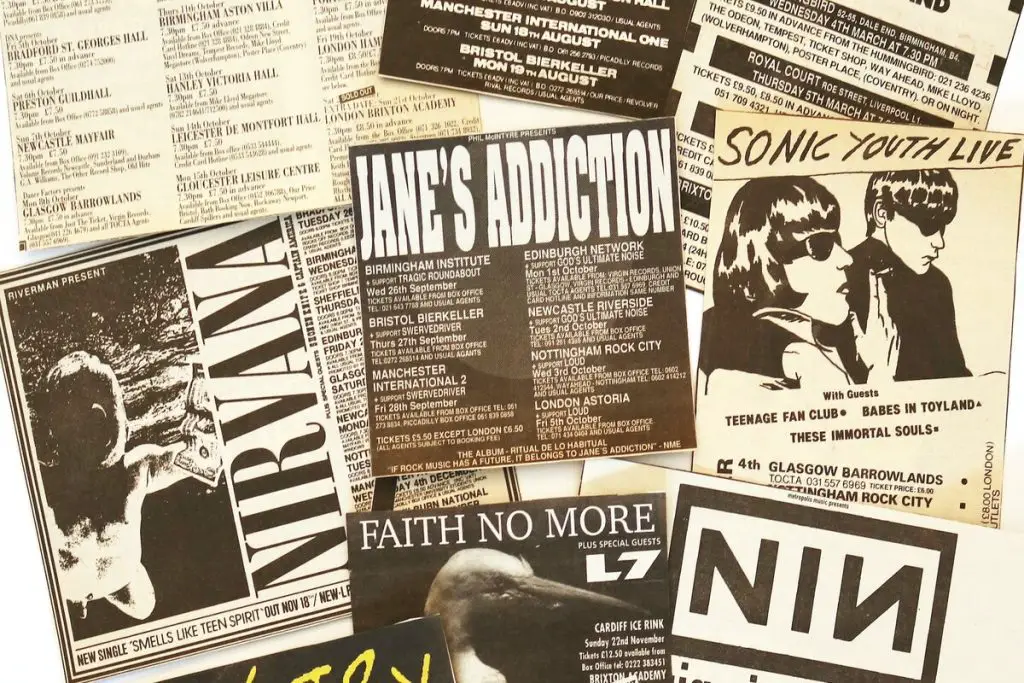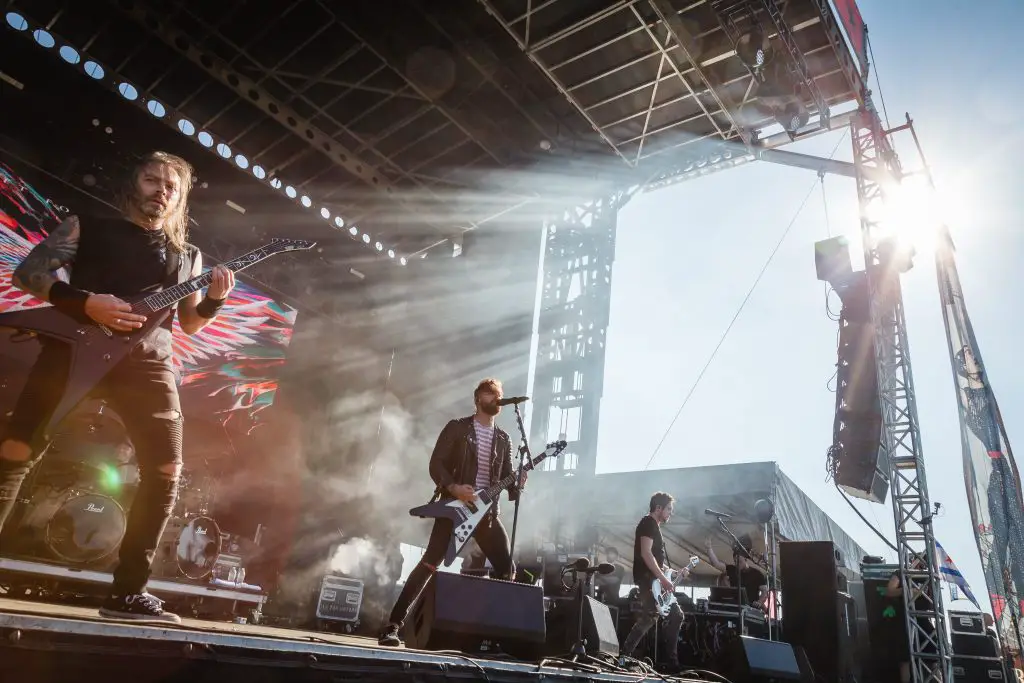Welcome to the world of grunge, my friends! You’ve stumbled upon a genre that’s as raw as your morning cup of joe and as earth-shattering as when you found out Santa wasn’t real. Let’s take a trip to the Pacific Northwest of the 1990s, where the grunge music scene exploded faster than you can say “Smells Like Teen Spirit.”
You’ll learn about the defining grunge sound, the bands that shaped the genre, and the fashion trends that made grunge synonymous with rebellion. So, let’s crank up the volume, and dive in!
What is grunge music? Grunge music is a subgenre of alternative rock originating in the Pacific Northwest in the late 1980s and early 1990s. It is characterized by its heavy use of guitar distortion, raw vocals, and a fusion of punk rock and heavy metal influences.
What is grunge music?
Grunge music was a subgenre of hard rock and alternative music that gained widespread popularity in the late 1980s and early 1990s. It sprouted from the fertile grounds of the Pacific Northwest, with Seattle, Washington serving as its epicenter.

AKAI Professional MPK Mini MK3

AKAI Professional MPK Mini MK3
How did grunge music originate?
Grunge music originated in the mid-1980s in the American Pacific Northwest, particularly in Seattle, Washington, and nearby towns. This alternative rock genre and subculture emerged as a fusion of punk rock and heavy metal elements but without the structure and speed of punk rock. The genre featured a distorted electric guitar sound commonly used in both punk rock and heavy metal.
Seattle bands in the mid-’80s started mixing metal and punk rock to create the grunge sound. The term “grunge” was first used to describe murky-guitar bands, most notably Nirvana and Pearl Jam, that emerged from Seattle in the late 1980s, serving as a bridge between mainstream 1980s heavy metal-hard rock and post-punk alternative rock.
The history of grunge’s formative years is characterized by flexible band members and tight-knit circles of musicians who were inspired by each other. The word “grunge,” which means grime or dirt, came to represent the music genre and the fashion style and lifestyle associated with the Pacific Northwest and, specifically, Seattle.

What are the defining characteristics of grunge music?
Grunge music is known for its distinctive sound, characterized by heavy distortion, thunderous power chords, and strong riffs. Lets break down what makes grunge, grunge.
1. Guitar sludge: the dirty sound of grunge
Grunge music was known for its heavy distortion and thunderous power chord riffs. Grunge guitarists, like Kim Thayil of Soundgarden, steered clear of flashy guitar solos and instead relied on distortion pedals and powerful amplifiers to deliver their signature sound. The result? A dirty, sludgy tone that set grunge apart from other genres.
2. Minimal drum kits: stripped-down power
Grunge bands took a minimalist approach to their drum kits, moving away from the elaborate setups favored by ’80s rock bands. Drummers like Dave Grohl and Matt Cameron opted for four- or six-piece drum kits, focusing on skill and power rather than flashy embellishments. The goal was to deliver an overwhelming grunge beat with a raw and straightforward approach.
3. Intense vocals: from bellowing to muscular vibrato
Kurt Cobain’s unique vocal style, characterized by a slurred, growling delivery that could rise to a stunning bellow, largely defined grunge vocals. This distinctive approach was echoed to varying degrees by other singers like Courtney Love of Hole, Layne Staley of Alice in Chains, Eddie Vedder of Pearl Jam, and Chris Cornell of Soundgarden. Their vocals added an intense and emotive layer to the music, with Vedder and Cornell infusing a muscular vibrato into their performances.
4. Dark lyrics: reflections of angst and despair
Grunge lyrics frequently explored themes of despair, disillusionment, hopelessness, and self-loathing. They reflected the feelings of the grunge fanbase, who often grappled with the challenges of their generation. While some lyrics had an ironic detachment, many captured the raw emotions and frustrations of teens and young adults searching for meaning and grappling with societal issues.

How did grunge music influence pop culture?
Grunge music left an indelible mark on popular culture, extending its influence far beyond the realm of music. Let’s take a closer look at the different areas where grunge made its impact.
Fashion: the rise of grunge style
Grunge fashion became a hallmark of the genre, reflecting the lower- to middle-class backgrounds of both performers and listeners. Plaid flannel shirts, ripped jeans, and a nonchalant, “just rolled out of bed” look became iconic. Female rockers like Courtney Love and Kat Bjelland added a touch of ’50s girls’ fashion and ’70s glam, creating a unique style that blended rebellion and nostalgia. Even mainstream designers eventually adopted grunge fashion, despite initial criticism.
Literature: grunge lit and its disenfranchised protagonists
The American grunge scene also influenced a subgenre of Australian fiction in the 1990s known as grunge lit. These novels mirrored the music’s themes, focusing on disenfranchised young people searching for meaning in their lives. Poverty, drugs, and nihilism often served as touchstones for this literary movement, portraying a gritty and realistic portrayal of the struggles faced by the grunge generation.
Grunge music became a platform for expressing frustrations and calling for change, resonating with a generation eager to make a difference.
Graphic design: capturing the gritty realism
Grunge rock graphics drew heavily from the Xerox aesthetics of the ’70s and ’80s punk, creating a look that embodied a gritty, handmade realism. Blurred photos, hand-drawn iconography, and mismatched font types were used to convey the raw energy and DIY spirit of the genre. These designs quickly transitioned from underground zines to mainstream publications and advertising.
Hot button topics: music as a voice for change
Similar to genres like hip-hop, grunge brought socially conscious subjects to the forefront. Feminism and liberalism were espoused by grunge bands, shedding light on the challenges faced by their listeners, including substance abuse, alienation, and homelessness. Grunge music became a platform for expressing frustrations and calling for change, resonating with a generation eager to make a difference.
To help you navigate the world of grunge music and capture its essence in your own recordings, here are some quick dos and don’ts:
| Dos | Don’ts |
|---|---|
| Embrace heavy distortion and sludgy guitar tones | Rely solely on flashy guitar solos |
| Experiment with minimalistic drum patterns | Overcomplicate drum arrangements |
| Infuse intensity and emotion into your vocals | Strive for a polished, mainstream sound |
| Express raw and introspective lyrics | Shy away from addressing social issues or personal struggles |
Notable grunge albums: gems that defined the genre
Let’s dive into some of the most notable grunge albums that left an indelible mark on the music landscape. These albums not only encapsulated the spirit of grunge but also shaped the direction of the genre and its cultural impact.
1. Come On Down by Green River
Considered by many as the first grunge album, Come On Down by Green River set the tone for the genre with its rough mix of metal and sludgy post-punk. This influential band included members who would go on to form other iconic grunge groups, such as Mudhoney and Pearl Jam. The album laid the groundwork for the grunge movement, showcasing the raw power and DIY ethos that would define the genre.
2. Deep Six Compilation
The Deep Six compilation, released by C/Z Records in 1986, played a pivotal role in shaping the future of grunge. This six-song EP moved away from punk’s fast-paced aggression and delved into slower, darker territories. It featured early songs by bands like Mudhoney, Soundgarden, The Melvins, and Malfunkshun, hinting at the musical direction grunge would take. Deep Six signaled a shift in the grunge sound, laying the groundwork for the movement’s evolution.

3. Facelift by Alice in Chains
Alice in Chains became the first grunge band to sign with a major record label, and their album Facelift helped catapult grunge into the mainstream. The unnerving single “Man in the Box” gained significant airplay, showcasing the band’s haunting sound. Facelift’s success ushered in a new era for grunge, solidifying its place in the music industry and paving the way for other bands to follow.
4. Nevermind by Nirvana
For many listeners, Nirvana’s Nevermind epitomizes the grunge scene. The album’s phenomenal success, fueled by the iconic hit “Smells Like Teen Spirit,” disrupted the music industry and challenged the dominance of pop and hair metal. Nevermind topped the charts, capturing the zeitgeist of the early ’90s and propelling grunge into the mainstream. Its impact was seismic, marking a cultural shift in popular music.
5. Temple of the Dog
Temple of the Dog, a collaboration between members of Pearl Jam and Soundgarden, released their self-titled album as a tribute to the late Andrew Wood of Mother Love Bone. This project brought together some of grunge’s most successful proponents and showcased their talent and shared grief. Temple of the Dog pays homage to a lost talent and stands as a testament to the unity and friendship within the grunge community.
This table showcases the evolution of prominent grunge music bands from the late 1980s to the early 2000s. It offers a glimpse into the timeline of grunge music and highlights some of the influential bands that shaped its legacy.
| Grunge Band | Formation Year | Peak Years | Notable Contributions |
|---|---|---|---|
| Nirvana | 1987 | 1991-1994 | Smells Like Teen Spirit, Nevermind, In Utero |
| Pearl Jam | 1990 | 1991-1996 | Ten, Vs., Vitalogy |
| Soundgarden | 1984 | 1994-1997 | Superunknown, Badmotorfinger, Down on the Upside |
| Alice in Chains | 1987 | 1992-1996 | Dirt, Jar of Flies, Alice in Chains |
| Stone Temple Pilots | 1989 | 1992-1997 | Core, Purple, Tiny Music… Songs from the Vatican Gift Shop |
| Mudhoney | 1988 | 1988-1993 | Superfuzz Bigmuff, Every Good Boy Deserves Fudge |
Conclusion
Well, folks, we’ve reached the end of our grunge journey, and I must say it’s been a trip that’s left us more tangled than a second-hand flannel shirt. So, did we manage to strike the right chord in your quest to understand grunge music? And did I cover everything you wanted to know? Let me know in the comments section below—I read and reply to every comment.
If you found this article helpful, share it with a friend, and check out my full blog for more tips and tricks on exploring the wonderful world of music. Thanks for reading, and remember, in the immortal words of Kurt Cobain, “Come as you are,” but maybe leave the flannel at home this time!
Key takeaways
This article covered grunge music. Here are some key takeaways:
- Grunge music originated in the Pacific Northwest during the late 1980s and early 1990s.
- Distinct characteristics include heavy guitar distortion, raw vocals, and a mix of punk rock and heavy metal influences.
- Grunge fashion developed as a reflection of the music’s anti-establishment attitude and practical regional style.
- The Pacific Northwest’s weather and music scene fostered a sense of isolation and introspection that contributed to grunge music.















